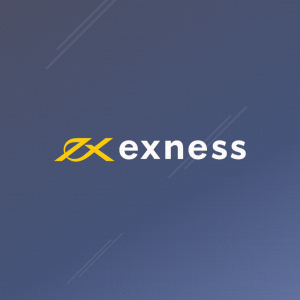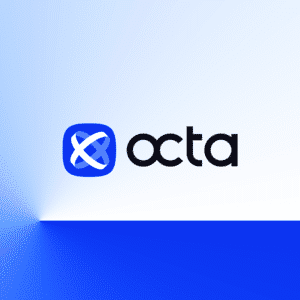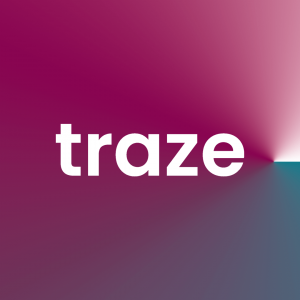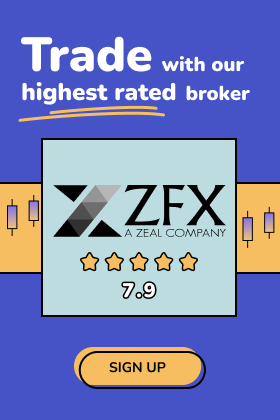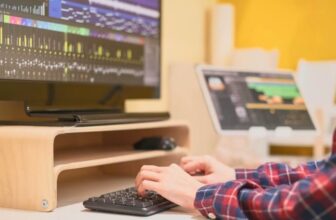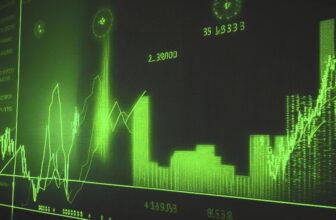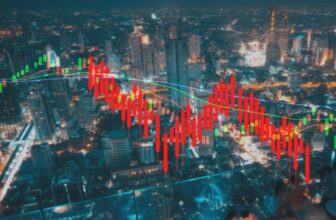
Ever hesitated before making a purchase because you didn’t know how much that purchase would set you back by? Lot sizes in forex are a way of standardising trade size so that everyone, when trading, is on the same page when trading assets. Lots in forex are a unit of measurement of position size. With lots, when an exchange currency pair changes value, it is measured in pips (percentage in price). A pip movement is in the fourth decimal point of a currency pair, meaning the change in price is miniscule. The calculation below illustrates a change in pip value:
For example, USD/JPY is trading at 1.0659. USD/JPY rises in value to 1.0660. So here, the pip value of USD has increased by 1 pip, calculated as: – 1.0660 – 1.0659 = 0.0001.
One pip is a small price movement, however, with leverage in forex, a trader’s purchasing power is augmented but so is their risk exposure. A broker’s caveat should explain this in more detail. The brokerage institution, ZFX provides different leverages through their trading account types. With four trading accounts to choose from, ZFX offers leverages starting from 1:500. It’s worth checking out the trading accounts they offer for an overall understanding of lot sizes and leverages in forex.
1. Lot Sizes Explained: The Nitty Gritty
The best way to explain lot size in forex is by getting to know the four types of lot sizes: Standard, Mini, Micro and Nano. Each of these come with a fixed number of units as listed down below:
| Lot Size | Number of Units |
| Standard | 100,000 |
| Mini | 10,000 |
| Micro | 1,000 |
| Nano | 100 |
Knowing the four lot sizes in forex makes it easier to get into deciding on a trade strategy but there’s a bit more ground to be covered on lot sizes. A firm grasp on the concept of lots in forex is the basis of forming a unique trading strategy suited to every trader’s strength.
Every lot size has its individual pip value which is further discussed below.
- Standard Lot in Forex
When a trader decides to enter a position by purchasing a standard lot of USD/CAD, they are basically buying 100,000 units of the base pair of the USD/CAD. So, if in this case the current exchange rate was 1.35 then a trader would be purchasing forex units of USD/CAD worth 1.35 x 100,000 = $135,000.
Every move a pip makes has a value depending on the trade value, current exchange rate and which exchange currency pair is traded. But a standard lot has a pip movement of roughly $10.
- Calculating a Mini Lot in Forex
A mini lot is 10,000 units of the base currency of an exchange currency pair. For example, a trader purchases one mini lot of the USD/AUD pair at the rate of 1.10. Here, it would cost them 1.10 x 10,000 = $11,000. Give or take, a pip movement in a mini lot is $1 a trade.
For traders looking to trade and to avoid risking a huge chunk of funds, a mini lot would allow trading with manageable risk. At the same time, trading mini lots also have good profit potential. This is especially true for day traders who know how to capitalise on leverage trading and who make use of the 1% risk rule. With this rule, a day trader limits their losses by setting stop losses at 1% for their trades.
- Calculating a Micro Lot in Forex
A micro lot is even smaller at 1,000 units of the base pair. If a trader were to choose to purchase the USD/NZD at the rate 1.59 then they would be looking to spend 1.59 x 1,000 = $1,590 of the USD. Trading small accounts can be profitable for beginner traders or part-time traders.
When trading with a conservative budget, risk management is a trader’s best tool. After a trader has honed their skills with a small trading account, they would be able to transition to a larger account with more confidence. Not to mention, they would also be more adept at switching strategies between small and large trading, making them more resilient in facing choppy market conditions.
- Calculating a Nano Lot in Forex
Probably the best lot for beginners to trade, a nano lot is 100 units of a base currency. The risk involved is minimal, but so is the profit margin. For instance, if a trader purchases a nano lot of USD/NZD at 1.59, they would spend 1.59 x 100 = $159.
Quite like practising with a demo account, traders might get a better feel of trading in real market conditions and with real money using nano lots. Depending on a trader’s spending power and risk appetite, they could consider opening a live account and trading with nano lots instead of starting with a demo account.
2. Forex Lot Size Chart
For better illustration, below is a lot size chart:
| Forex Lot Size | Units | Decimal | Pip Value ($) |
| Standard | 100,000 | 1 | $10 approx |
| Mini | 10,000 | 0.1 | $1 approx |
| Micro | 1,000 | 0.01 | $0.10 approx |
| Nano | 100 | 0.001 | $0.01 approx |
With this information, a trader could easily decide the trade size they want to open position with, based on the value per pip of a lot size. A pip value is provided by a broker (shown in the chart above, approximately) but for the purpose of argument, the formula is pip value/current exchange rate* lot size.
Most pips are calculated in the fourth decimal point as 0.0001, so in the scenario that a trader was interested in buying a standard lot of the USD/CAD at a current rate of 1.01, then the formula would be applied as such:
0.0001/1.01*100,000 = $9.90 per pip. So, if the market price increases by 10 pips, the trader would have made $99.00.
With this formula in mind, a trader could better open position based on the margin they can afford, and leverage provided by a broker.
0.01 Lot Size Meaning in Forex
In forex trading, 0.01 lot size is a micro lot (as illustrated in the previous section’s chart). In dollars, a micro lot is $1,000 as it is 1,000 units of a currency pair. As this is a conservative amount of dollars for most traders, a micro lot is considered by most to be the ideal trading size to start with. When transitioning from a demo account to a live trading account, a micro lot could generate potential winnings worth a trader’s investment. Additionally, if a trader was to make losses, it won’t make a major dent to the wallet.
Likewise, investors trading relatively larger accounts also favour micro lots. For testing out market strategies, trading micro lots is ideal for the lesser risk exposure it brings. The lower deposits required to open a micro account also helps. Popular with beginner traders and small-scale retail traders alike, micro lots affords the same trading style as standard account (1 or 1.00 lot size) but with lower risks.
Can I Trade With $100 on Forex?
Beginner traders often get straight to the dollars and cents. They might want to know their potential winnings and losses with $100. Forex trading is all about managing risks which is where stop loss (SL) and take profit (TP) come in. Seasoned traders would give the advice of risking only 1-2% per trade. A $100 amount may seem small with no likelihood of generating a significant amount of profit. However, with SL and TP traders can protect their trade from unnecessary losses and still gain some wins, or at least break even.
- SL and TP
With $100 and leverage of 1:50, a trader could do the following. Applying 2% risk on a micro lot purchase, if a SL was to be set at 2% that would make the most a trader could lose on a trade as 2% of their margin. Likewise, a conservative win can be made when a TP order is correctly placed based on the right resistance level.
- Consider trading nano lots
Another option is to trade nano lots which requires less to open. With a volume of 100 units per nano lot, $100 is sufficient to start trading a nano lot. Each pip valued at $0.01 makes the maximum loss only $0.01 x 100 units = $1. Even though a trader can’t expect to make much on this trading style, it’s enough for a beginner to learn how to trade in real market conditions.
Understanding Lot, Pips and Leverage in Forex
When a trader starts forming a trading strategy, calculations of lots, pips and leverages need to be factored in. Much like price action being key to all trading analysis tools, the three abovementioned are vital information for when first opening a position. A trader would first decide on trade size, market volatility and liquidity, and the leverage made available to them.
- Leverage
Depending on the broker of choice, the leverage provided comes with the type of trading account opened. In the example of the ZFX Standard STP Trading Account, the maximum leverage given is 1:500. With this leverage, if a trader had $1,000 cash in hand, they would then be able to purchase a maximum trade volume worth $1,000 x 500 = $500,000. Meaning, if before average, a trader was only able to afford five micro lots, after leverage they can now afford to purchase five standard lots’ worth of an exchange currency pair.
- Pips
A pip is the smallest price change of a currency pair and helps a trader decide on how many units they can afford with the cash in hand. The corelation between leverage and pip, can make things confusing and lead a trader to make huge losses. But, when used correctly, leverage and pip can help make a trade profitable. It’s easy to see how a trader could overestimate their purchasing power after obtaining leverage. So, there’s a way that real purchasing power can be calculated while considering leverage.
- Calculations
Making a calculated trading decision with leverage starts with calculating how many pips you can lose before gaining leverage. For example:
Using a 1:50 leverage as an example, with $1000 a trader can buy 1000 units or 1 micro — before leverage. In a micro, each pip value is $0.10 or 10 cents. So, the number of 10 cent pips that can be purchased with $1,000: $1000/10 cents = 10,000 pips. Therefore, with $1,000 a trader can afford to lose 10,000 pip movements before their account hits the stop out level.
Now, with $50,000 spending power (with 1:50 leverage), the general assumption is that the amount of pip losses is also amplified by 50. However, this is a risky way to take advantage of leverage. Instead, the way spending power should be calculated is, cash in hand ($1,000) divided by pip value based on leverage ($5) times margin call percentage (80-90%). Brokers usually allow 80-90% of trading account margin before sending out a margin call.
$1,000/$5 x 80-90% = 200 potential pip loss x 80-90% = 160-180 potential pip loss. This then should be the number of units or volume a trader should purchase after obtaining a 1:50 leverage instead of 10,000 pips.
Forex and Lot Sizes
Lot sizes in forex is meant to guide a trader in deciding the trade volume for each position that they open. More than position size, and potential gains and losses, the lot size a trader chooses can have a larger impact on the market. Their choice can influence market trends, and asset demand and supply.
Seeing that lot sizes greatly impact trade risks and revenues, it’s important that a trader utilises as many risk-management tools available. Knowing how use them effectively is also essential in making a profitable trade. One such tool is the Average True Range (ATR) indicator which is explained in more detail here.
FAQs
- What does 0.01 lot size mean?
In forex trading, 0.01 lot size is a micro lot. In dollars, a micro lot is $1,000 as it is 1,000 units of a currency pair. - What does 1.00 lot size mean?
Popular with beginner traders and small-scale retail traders alike, micro lots affords the same trading style as standard account (1 or 1.00 lot size) but with lower risks. - What lot size is good for $100 forex?
With $100 and leverage of 1:50, a trader could do the following. Applying 2% risk on a micro lot purchase, if a SL was to be set at 2% that would make the most a trader could lose on a trade as 2% of their margin. Likewise, a conservative win can be made when a TP order is correctly placed based on the right resistance level.
Another option is to trade nano lots which requires less to open. With a volume of 100 units per nano lot, $100 is sufficient to start trading a nano lot. Each pip valued at $0.01 makes the maximum loss only $0.01 x 100 units = $1. Even though a trader can’t expect to make much on this trading style, it’s enough for a beginner to learn how to trade in real market conditions. - What is the best lot size for forex?
For traders looking to trade and to avoid risking a huge chunk of funds, a mini lot would allow trading with manageable risk. At the same time, trading mini lots also have good profit potential. This is especially true for day traders who know how to capitalise on leverage trading and who make use of the 1% risk rule. With this rule, a day trader limits their losses by setting stop losses at 1% for their trades.



